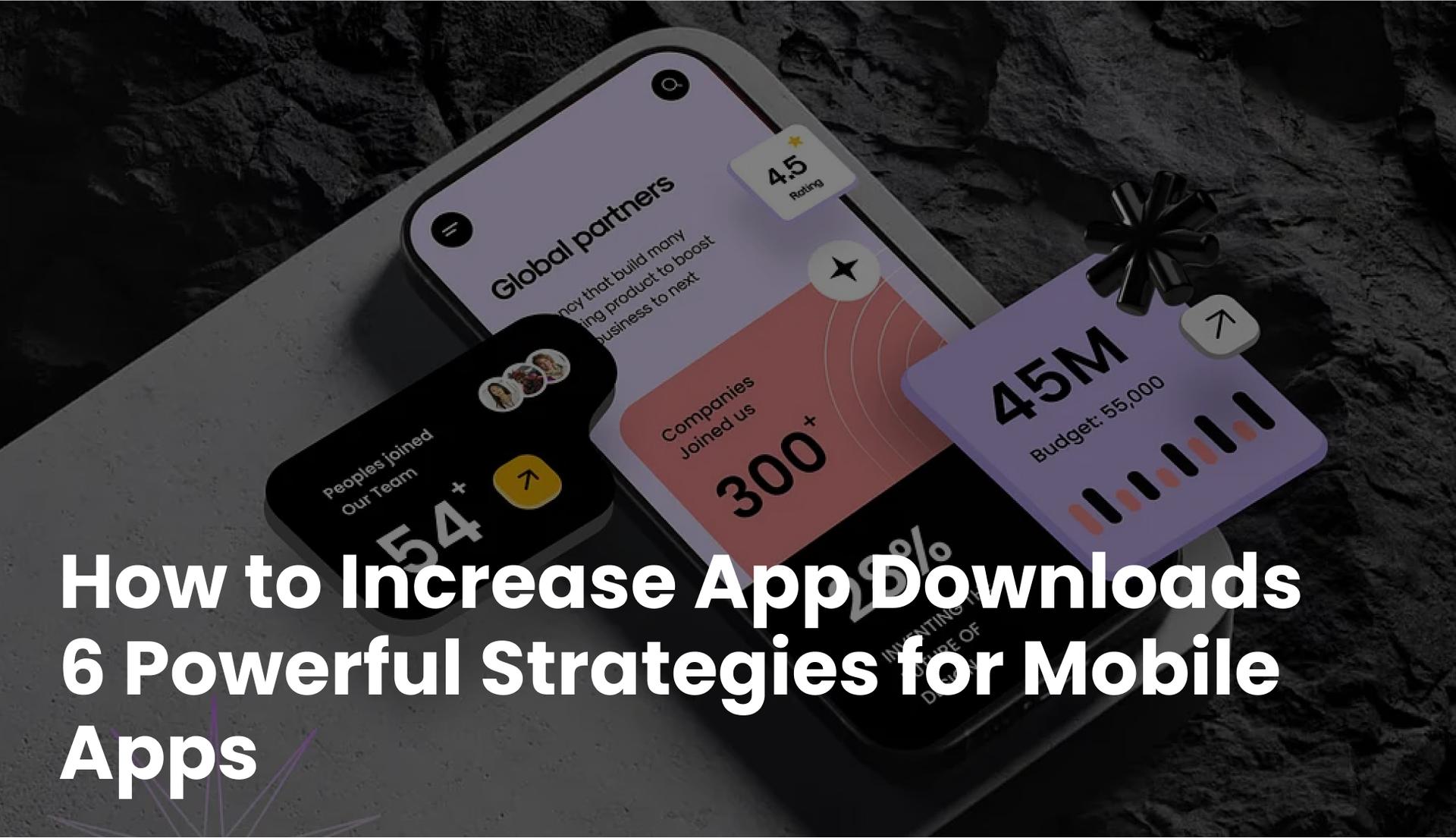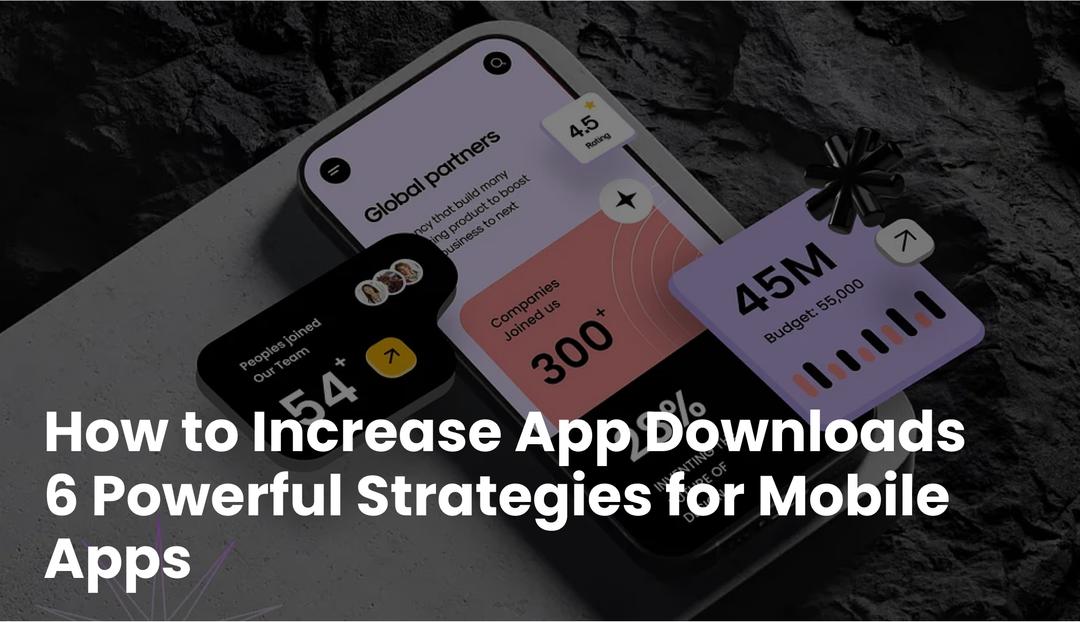Building an app isn’t enough anymore, you could create something incredible, an app that helps people save money, learn new skills, or even improve their health. But with millions of apps already available across Apple’s App Store, Google Play, and Amazon’s App Store, users won’t just stumble across your app by chance. You need a smart marketing strategy to get noticed and increase downloads.
Even if your app could solve huge problems like world hunger or climate change, it still wouldn’t be enough. With over 5.6 million apps across the Apple App Store, Google Play Store, and Amazon Appstore, standing out takes more than just building a great product; you need a smart marketing plan to grab attention and boost downloads.
6 Simple Strategies to Get More App Downloads
Marketing your app isn’t about using one magic trick, it’s about combining a few smart strategies that work together. Let’s start with one of the most important areas:
Our Blogs
How To Publish An App To Google Play Store?
Read Now!
1- Make Your App Look Great
People often decide whether to check out an app within seconds of seeing it. That’s why great visuals are so important.
Your app icon is usually the first thing users see. Think about apps like Duolingo or Headspace, their icons are clean, easy to recognize, and give you an idea of what the app is about. A good icon should reflect your app’s purpose while being simple and visually appealing. It should stand out without being too flashy or cluttered.
Once users click on your app, the next thing they see are the screenshots and preview videos. These images should clearly show what your app does. For example, if you’re promoting a food delivery app, include visuals of the menu, order process, and delivery tracking. If it’s a finance app, highlight key features like spending insights or budget tracking.
Adding a short video demo also helps a lot. A quick 30-second video showing how your app works can make people feel more confident about downloading it. This kind of video works well not just in the app store but also on your website and social media pages.
- Use screenshots that highlight your app’s best features
- Show real examples of how it works
- Add a short demo video or animation that explains what your app does
Videos are especially useful. A quick explainer video on your app store page, website, or social media can build trust and encourage more people to install your app.
2- Focus on App Store Optimization (ASO)
Did you know that most people find apps through search? In fact, Apple says around 70% of App Store visitors use the search bar to discover new apps, and nearly 65% of downloads happen right after a search. That means if your app isn’t showing up in relevant search results, you’re missing a huge opportunity. App Store Optimization (ASO) is how you improve your app’s visibility and get it in front of the right people.
Start With the Right Keywords
Before you can improve your app store listing, you need to know what search terms your audience is using. Begin by brainstorming words or phrases someone might type in when looking for an app like yours. Then, use ASO tools to expand that list, see how competitive each keyword is, and check how often it’s being searched.
Aim for a healthy mix of high-volume keywords (popular terms) and long-tail keywords (more specific phrases). You’ll want to naturally include your best keywords in the app title, subtitle, and description, but avoid overstuffing them. Keywords should feel like part of a natural sentence, not a random list.
ASO isn’t one-size-fits-all. Apple’s App Store and Google Play use different systems to rank apps, so your strategy should match the platform.
For example:
- Apple includes a special keyword field behind the scenes, but Google Play doesn’t.
- Google pays attention to keywords in your long app description, while Apple does not.
- External links from trusted websites can help boost your app’s ranking in Google Play, but they don’t influence rankings on the App Store.
Moreover, remember that each platform displays different information in search results. On Google Play, users mostly see your app’s name and icon, so make sure your title clearly explains what the app does. On the App Store, users also see the subtitles and screenshots, so you can afford to be a little more creative with your app’s name, and let visuals and supporting text do the heavy lifting.
3. Strengthen Your Reputation with Social Proof
When people are deciding whether to download an app, they often look at what others are saying. In fact, most users read reviews before they install anything, and having positive feedback can boost conversions significantly. Adding social proof to your app marketing plan is one of the easiest ways to build trust and grow downloads.
Encourage Users to Leave Ratings and Reviews
Almost everyone checks app ratings before hitting download. People want to know what kind of experience they can expect, and high ratings reassure them your app is worth their time. Fresh, honest reviews also help your app store ranking and increase the chances of showing up in search results.
Rather than trying to cheat the system with fake feedback, which can get your app removed, focus on getting real users to share their thoughts. You can offer small perks, like access to exclusive features, in return for a quick review. Just be sure to ask for feedback at the right time. A good moment might be right after a user completes a goal inside your app. Sending a friendly in-app prompt or follow-up email with a link to your app listing makes it simple for them to leave a review.
Use Influencer Marketing to Build Credibility
Another way to boost your app’s reputation is by getting trusted voices to talk about it. Influencers, whether they’re tech YouTubers, lifestyle bloggers, or niche content creators, often have loyal fans who value their recommendations. A short video review or blog post from an influencer can introduce your app to a wider audience and spark interest quickly.
You don’t need a big budget to do this. Instead of going after celebrities, try working with micro-influencers who specialize in your app’s topic. Whether it’s fitness, finance, or gaming, there’s likely someone out there whose followers match your target users. You can even offer promo codes for them to share, giving people an extra reason to download and try the app.
4. Localize Your App for Global Reach
If you’re planning to launch your app in multiple countries, it’s not enough to just translate the content. You need to localize it, that means adapting everything to fit the language, culture, and expectations of users in each region. Apps that skip localization can lose a noticeable chunk of users, while those that get it right often see more downloads and better engagement.
Localization Is More Than Just Translation
Simply translating your app’s content won’t guarantee success. You also need to think about how well your visuals, tone, and features connect with users in different cultures. Will local slang make sense? Do any icons or images have different meanings in other regions? It helps to use symbols or visuals that are easy to understand no matter where your users are from, instead of relying heavily on text.
Also, don’t forget about the small details that make a big difference—like payment methods, currency formats, date displays, and address forms. These should all feel familiar and natural to users in each location. Having someone from the target region review everything before launch can make sure nothing feels out of place.
Customize Your App Store Presence
Different markets use different terms when searching for solutions. That means keywords that work well in your home country might not get the same results elsewhere. It’s important to do fresh keyword research for each region so your app shows up in local search results.
Localizing also includes collecting reviews and testimonials from users in each country. These build trust and improve your ranking in local app stores. If you’re just starting out in a new market, consider running paid ads to raise awareness and drive traffic to your app. This initial push can help your app gain momentum and get picked up by app store algorithms faster.
5. Enhance Brand Awareness to Attract More Downloads
To get your app in front of more people, you need to look beyond just the app store. You want to reach your target audience wherever they spend their time—whether that’s online or in the real world.
Promote Across Multiple Channels
Think big when it comes to marketing. Don’t rely solely on one platform. Use a mix of strategies like content marketing, email and SMS campaigns, search ads, and social media promotion. If your app is getting ready to launch, start building a subscriber list on your website. This way, you can notify your audience the moment your app goes live and encourage a strong wave of early downloads—something that can also help improve your app store ranking.
In addition to promoting on your own site and social media accounts, take part in relevant conversations on platforms like Reddit or niche forums. You can also get more visibility by listing your app on directories, writing guest posts for industry blogs, or getting mentioned in online magazines.
Create a Community Within Your App
Having a strong in-app community is a great way to keep users engaged and coming back, and it also encourages them to invite others. You can add features like group chats, forums, or even video calls so users can connect and share content.
Live streaming is also a great way to grab attention. You could host product demos, offer behind-the-scenes content, or even organize virtual watch parties. These events not only create buzz but can also lead to more downloads and word-of-mouth promotion. Features like live chat during events can make things even more interactive and social, encouraging users to invite friends and expand your reach.
6. Monitor, Learn, and Keep Improving
Launching an app is a big milestone, but it’s not the finish line. In fact, it’s only the beginning. If you really want to grow your user base and keep those downloads climbing, you need to stay curious, stay informed, and keep evolving. And that all starts with tracking what matters.
Focus on Key Metrics
Start by choosing performance indicators that align with your goals. For example, if you’re aiming to get more installs, pay close attention to where your downloads are coming from. This will help you focus your time and budget on the most effective traffic sources. Also, looking at what types of devices or operating systems your users have can help you refine your targeting and advertising.
Use data to dig into important insights like how many people are viewing your app listing, your download conversion rate, and what it costs to get each new install. With this information, you can experiment with A/B testing, trying out different app descriptions, screenshots, ad creatives, or email campaigns, to see what works best.
Making the Price Right
Free is a magic word, especially in the app world. Offering your app for free (with limited features) can attract way more users and give your app that initial boost it needs. Once people are using it and loving it, they’re far more likely to upgrade or make in-app purchases.
That’s why freemium models work so well. But not all freemium apps are built the same. You might offer free features with paid upgrades (like most productivity tools), or go ad-supported and generate revenue that way. It all depends on your audience, your app’s purpose, and how people prefer to engage with it.
Keep Evolving
The truth is, there’s no single formula that guarantees app success. What works today might not work tomorrow. But by keeping your finger on the pulse, watching the data, listening to your users, and adjusting your strategy, you give your app the best possible chance to grow.
Stop Wishing, Start Growing
Tired of seeing your app's download numbers stall? It's time to take control. This guide outlines six powerful, proven strategies that will help you skyrocket your downloads and build the user base you've been dreaming of
Boost My Downloads Now
Launching an app is the first step. Growing it into something people rely on every day? That’s where the real magic happens.








